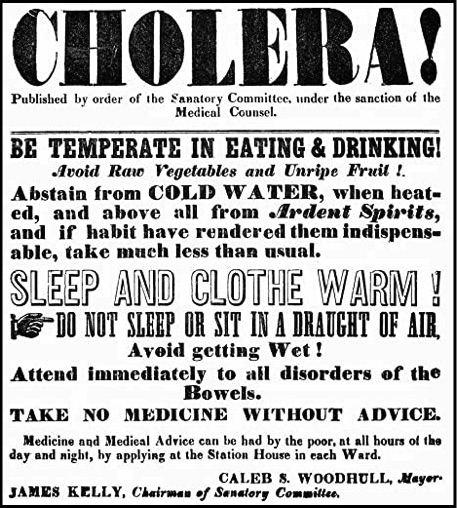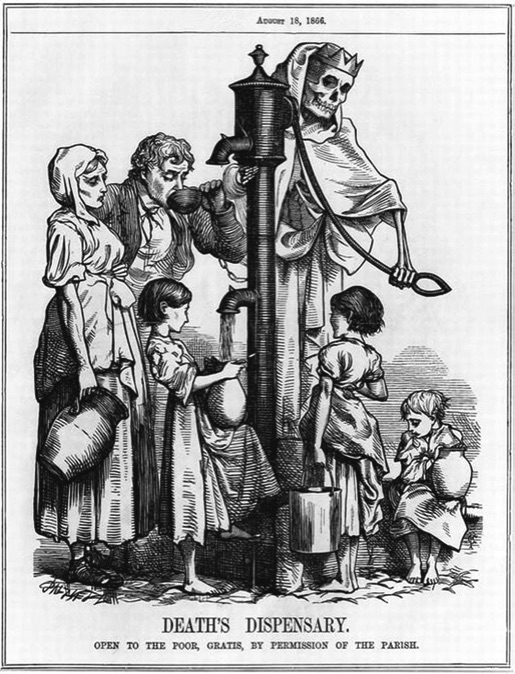
Cholera, believed spread from Irish immigrant ship(s) from England to the United States, spread throughout the Mississippi river system, killing over 4,500 in St. Louis and over 3,000 in New Orleans.
Thousands died in New York, a major destination for Irish immigrants.
The outbreak that struck Nashville in 1849–1850 took the life of former U.S. President James K. Polk.
During the California Gold Rush, cholera was transmitted along the California, Mormon and Oregon Trails as 6,000 to 12,000 are believed to have died on their way to Utah and Oregon in the cholera years of 1849–1855.
It is believed cholera claimed more than 150,000 victims in the United States during the two pandemics between 1832 and 1849,and also claimed 200,000 victims in Mexico.
The above article and the one at the lower right came from Wikipedia; see: 1846-1860 cholera pandemic


BACKGROUND INFO ON CHOLERA EPIDEMIC OF THE MID-19TH CENTURY IN THE USA

The 1854 Broad Street cholera outbreak was a severe outbreak of cholera that occurred in 1854 near Broad Street (now Broadwick Street) in the Soho district of London, England, and occurred during the third cholera pandemic. This outbreak, which killed 616 people, is best known for the physician John Snow's study of its causes and his hypothesis that germ-contaminated water was the source of cholera, rather than particles in the air (referred to as "miasma").
Snow identified the source of an 1854 cholera outbreak as the public water pump on Broad Street (now Broadwick Street). Although his studies were not entirely conclusive, his advocacy convinced the local council to disable the Broad Street pump by removing its handle. Snow later used a dot map to illustrate the cluster of cholera cases around the pump. He also used statistics to illustrate the connection between the quality of the water source and cholera cases, showing that water was being delivered to the outbreak area from sewage-polluted sections of the Thames, leading to an increased incidence of cholera. Snow's study was a major event in the history of public health and geography. It is regarded as one of the founding events of the science of epidemiology.
The grim illustration, at the left, becomes more relevant after reading the following - which tells how John Snow linked the spread of cholera to public drinking water.
Darrtown did not escape the cholera plague that swept the world in the middle of the 19th century.
News of the pandemic was publicized nationally, as shown by the reporting of deaths in Oxford, Morning Sun, and Darrtown, Ohio by the Cincinnati Gazette and then the Pittsburgh Gazette.
